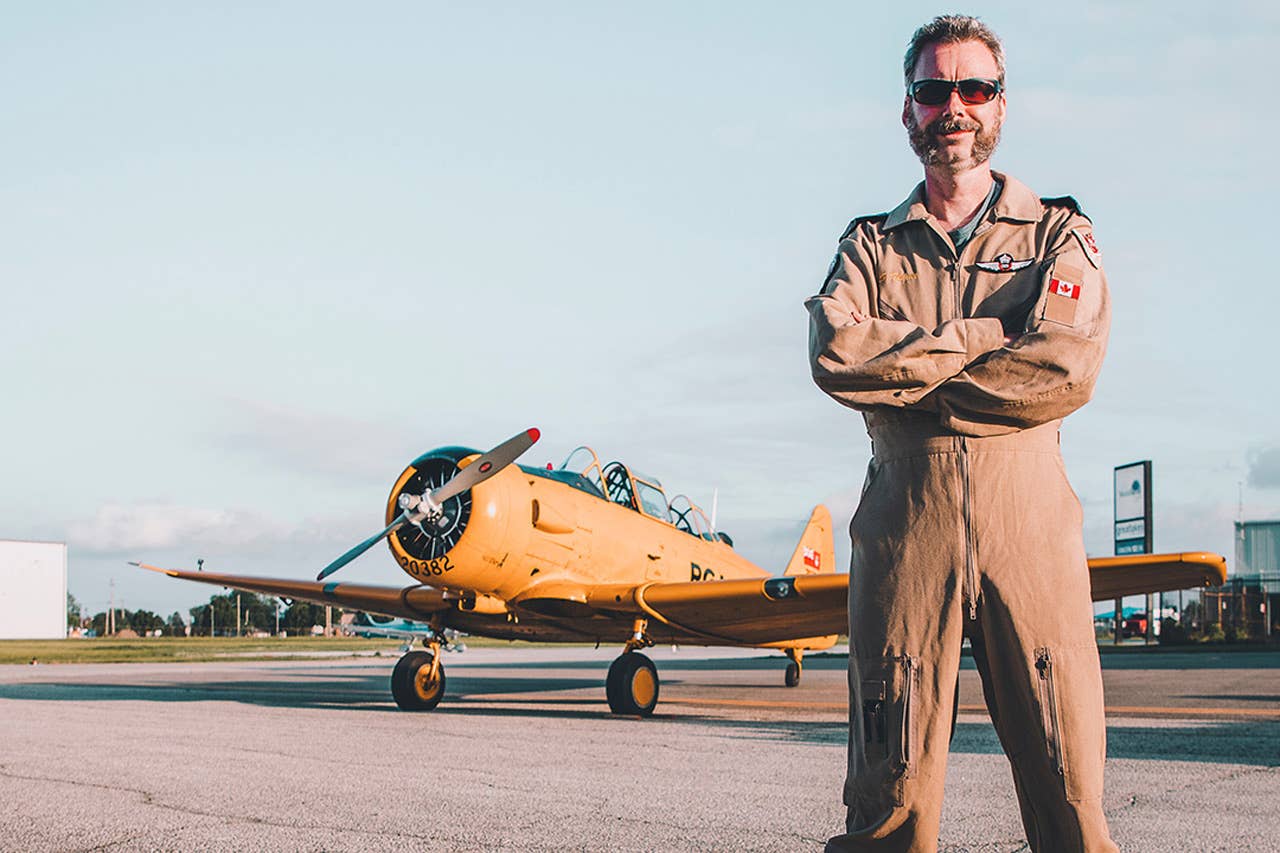
Steve Thorne presents his aviation experience via YouTube as a regular pilot that most can relate to—even as he flies extraordinary aircraft. Flight Chops
“Today, I’m not only going to give you the problems, I’m going to give you the solutions.” When a pilot hears those words from an instructor before launching into a flight review—what can be a pedestrian exercise at best—that pilot knows this session will be different.
Steve Thorne didn't have to fly all the way from Ontario to Atlanta to get a decent flight review—but he was compelled to by the potential for adventure and greater learning. He's known to many as the founder of Flight Chops, the "weekend warrior" on YouTube who flies for his own satisfaction, representing for many pilots a reflection of themselves. He's relatable, humble, and genuinely interested in the Flight Chops motto: "Practice. Review. Improve."
Thorne teamed up with flight instructor and retired Delta captain Dan Gryder to take the flight review that could change Thorne's approach to flying for good. In the subsequent video released on the Flight Chops YouTube channel, Gryder examines the four big failure areas that general aviation pilots continue to suffer from—and that cause accidents.
The video has garnered significant—and positive—response from pilots and instructors at all levels. The scene is set in the Atlanta Hartsfield International Airport, as Thorne deplanes and is greeted by Gryder. As Thorne relates, “I like to capture that raw thing, and set up the story in the right way.” So, he had no pre-briefing from Gryder on how their time together would unfold. What viewers see on the video are Thorne’s honest reactions to the situations into which Gryder places him.
Their first task is to question random airline pilots at the airport on a seemingly simple question: Is maneuvering speed a maximum or a minimum? Airline pilots say minimum, and it's a speed they have calculated in advance of each flight based on conditions, but general aviation pilots quizzed later have routinely been taught VA as a maximum—and they tend to spout out one number with only a minor adjustment for weight.
After that question follows a second one. Which is more important: a strong stall recovery or the prevention of a low-speed scenario? Again, the airline pilots queried answer in favor of prevention, while GA pilots responded in favor of stall recovery. Gryder believes this thinking forms the foundation for what hurts us time and again in light airplanes.
Gryder has contemplated the whys of fatal stall-spin accidents ever since two specific tragedies hit him close to home. The first: A student of his, Brock, experienced an engine failure on takeoff at 300 feet agl in a Cessna 172, followed by a stall and spin. Then, just a year later, in a Kitfox, at the same airport, under the same conditions, his colleague Leo did the same thing.
“Brock wasn’t trained—it was my fault,” says Gryder. “Our entire system out there needs new concepts, new review.”
“This is definitely a conversation we all need to have,” says Thorne.
Thorne’s flight review focused on the following: Loss of power on takeoff. Defined minimum maneuvering speed. Inadvertent IMC. Go-arounds. The video captures the full effect of the lessons involved, but they boil down into a few key takeaways.
Loss of power on takeoff. Mitigating the accident that follows means changing your expectations. So, step one is to talk to yourself and be expecting it: "There's the engine failure. Push." When you hear the pitch change in the engine, push the nose forward, and unload the wing. As demonstrated in the video, within six seconds the airplane approaches a stall in the Piper Cherokee used in the flight review, if the wing isn't unloaded. "If you're totally not expecting it, your 286 computer stops computing," says Gryder.
DMMS: Defined minimum maneuvering speed. This is similar to the speed that airline pilots polled in the video are referencing when they talk about maneuvering speed being a minimum, not a maximum. Gryder calculates the number as 1.404 times VS, to account for a margin above stall speed in up to a 30-degree bank. It comes out to 68 knots in the Cherokee, so Thorne puts a homemade indicator made of colored tape on his airspeed indicator. Below this speed, there be dragons—any flight in this regime should raise an instant red flag unless purposefully made.
Inadvertent IMC. In the video, this takes the form of a demonstration on task management, on how not to get overloaded during a takeoff into IMC that occurs before the pilot is truly ready. Stress is added by emulating an annoyed controller with an inept pilot. To increase the stress, Gryder hands Thorne an after-takeoff checklist—with the instruction to complete it before he can contact the controller after departure. The idea is to imprint the old adage with a new version: "aviate, navigate—and manage the airplane—and then communicate." "Your number-one job is to fly the airplane," says Gryder.
Go-arounds. If you pull up during a go-around without regaining all of your power, you put yourself in a bad situation. During a go-around, both hands are going to push—the one that's on the yoke and the one that's on the power quadrant. Gain speed, gain power back (using throttle and carb heat, if installed), and then begin the climb. Get your energy going before you retract the flaps.
Thorne’s flight review ends with a trip over to the airport where Brock and Leo died, with almost the same weather and runway conditions that they had on that day—good VFR. Gryder pulled the power on Thorne after takeoff, he pushed, and they saw what was ahead: a survivable landing, if you stayed under control.

Subscribe to Our Newsletter
Get the latest FLYING stories delivered directly to your inbox






